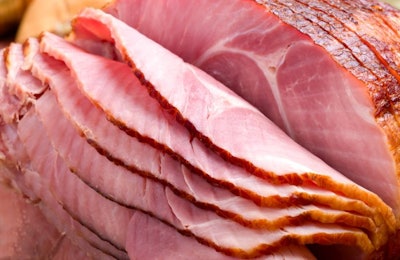
Mexico, the United States and Asian pork markets developed a trade network that utilizes advantages that each location provides, reported the U.S. Department of Agriculture’s (USDA) Foreign Agricultural Service in their biannual World Markets and Trade Report.
U.S. pork exports to Mexico grew in past decade
Pork producers in the United States export lower-value hams and other pork products to Mexico, according to USDA analysts. These exports have been a strong driver of U.S. pork production during the past decade. U.S. pork exports have expanded from nine percent of production during 2000-2005 to a forecast 22 percent in 2017.
Mexico has also seen the largest growth in demand for U.S. pork, nearly quadrupling since 2000, according to, according to USDA analysts. Pork exports from the U.S. now make up nearly 90 percent of the market share in Mexico. By volume, Mexican imports of U.S. pork grew from 276,000 tons in 2000 to 1 million tons in 2016. Low transportation costs, duty-free market access and relatively lower prices for U.S. pork have driven this growth.
The U.S. pork industry enjoys greater biosecurity, efficiencies of scale, superior pig genetics and lower-cost feed than Mexico, which helps keep U.S. pig farms less expensive Mexican pork production, wrote USDA analysts. These advantages help drive U.S. pork exports to Mexico, along with demand among Mexican pork consumers.
Mexico’s domestic pork consumption
USDA analysts forecast that Mexican pork imports are set to gain an additional eight percent in 2017, which will make Mexico the third largest global pork market, after China and Japan. Domestic demand drives much of Mexico’s import growth, as per capita consumption has climbed from 12 to 18 kilograms between 2000 and 2016.
USDA data shows that this consumption gain has outstripped production increases. Mexican pork production rose by an average of approximately two percent per year, compared to consumption growth of five percent, between 2007 and 2016.
Mexican pork exports to Asia and U.S.
While producing pork generally costs more in Mexico than the U.S., due to smaller herd sizes, more-expensive feed and other factors, land and labor costs remain less expensive in Mexico than the U.S. This leads to the three-part trade network between the two North American countries and Asian markets.
Mexico can import U.S. pork products, such as hams, for less that it costs to produce them domestically, noted USDA analysts. Mexican pork facilities process that imported pork and their own domestic production into higher-value pork products. Mexico’s pork packing facilities take advantage of local low-cost labor to create these labor-intensive specialty pork products, such as shish kabobs and pre-formed patties for the foodservice industry.
Mexican pork processors then export those higher-value items to markets in Asia. Japan pulls in approximately 80 percent of those exports, enjoying a 2004 free-trade agreement between the two nations. South Korea accounts for another 10 percent. The U.S. imports another nine percent of Mexico’s total pork exports.
So, while their pork imports grow, Mexico’s exports of pork products also are set to grow 13 percent in 2017 to 160,000 tons, according to USDA forecasts.
In summary, U.S. pig farms produce pork at lower cost than their peers in Mexico. Mexican pork processors import that meat and transform it into processed, labor-intensive products at lower cost than counterparts in the U.S. Asian markets and the U.S. then import those processed products.


















